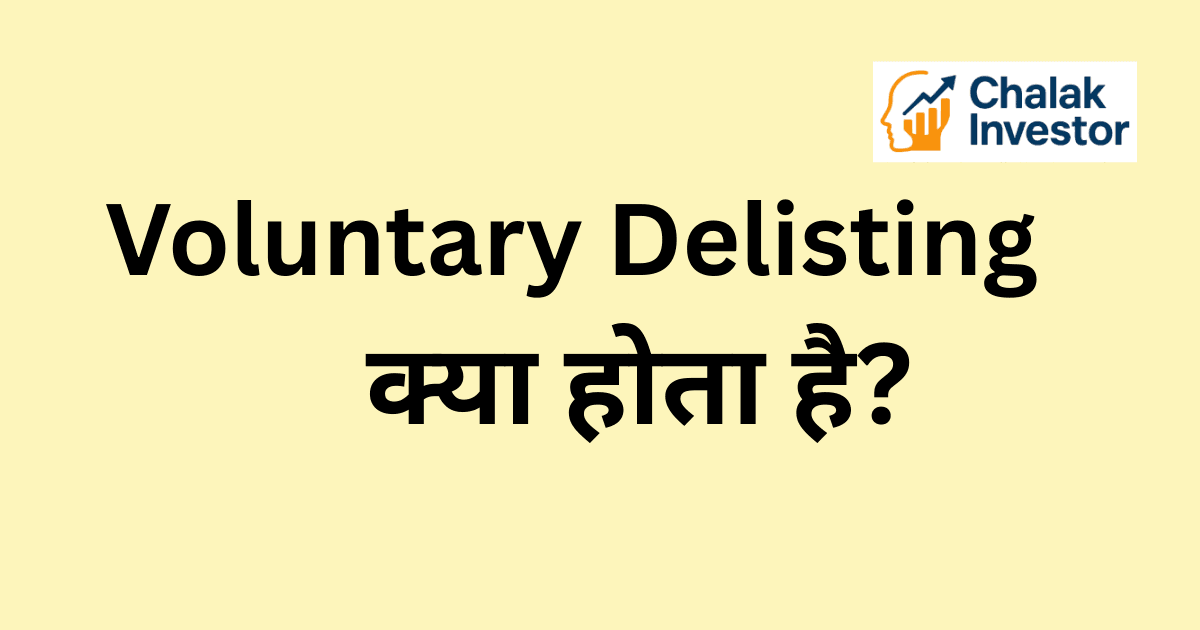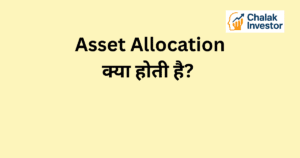शेयर बाजार में हर कंपनी अपने शेयरों को stock exchange में list करवाती है ताकि वह investors से आसानी से पैसा जुटा सके और अपने business को आगे बढ़ा सके। लेकिन कई बार ऐसा भी होता है जब कोई कंपनी अपने shares को exchange से हटा लेती है। इस प्रक्रिया को Delisting कहा जाता है। अब सवाल यह आता है कि Voluntary Delisting क्या होता है और यह क्यों किया जाता है? सरल शब्दों में, जब कोई कंपनी अपनी मर्ज़ी से अपने shares को stock exchange से हटाने का निर्णय लेती है, तो इसे voluntary delisting कहते हैं। यह एक corporate action है, जिसमें promoters अपने investors को exit opportunity देकर shares खरीद लेते हैं और इसके बाद कंपनी public market से बाहर हो जाती है।
Voluntary Delisting की परिभाषा (Definition)
जब कोई कंपनी खुद अपनी मर्ज़ी से stock exchange से shares delist करने का निर्णय लेती है, तो इसे voluntary delisting कहा जाता है। इसमें कंपनी promoters अपने shareholders को एक exit offer देते हैं ताकि वे अपने shares एक निश्चित कीमत (exit price) पर बेच सकें। इस process के पूरा होने के बाद कंपनी के shares किसी भी stock exchange पर trade नहीं होते।
Voluntary Delisting क्यों किया जाता है? (Reasons)
Low Trading Volume:
अगर किसी कंपनी के shares में liquidity कम है और बहुत कम लोग उनका trade कर रहे हैं, तो कंपनी delist करना चाहती है।
Cost Saving:
Stock exchanges पर listed रहने के लिए कंपनियों को listing fees, compliance और reporting खर्च उठाना पड़ता है। इन्हें बचाने के लिए भी कंपनियाँ voluntary delisting चुनती हैं।
Restructuring:
कई बार parent company अपनी subsidiaries को merge या reorganize करना चाहती है। इस स्थिति में delisting एक strategic कदम होता है।
Private बनना:
Promoters कई बार पूरी ownership अपने पास रखना चाहते हैं और कंपनी को private बनाना चाहते हैं।
Strategic Decision:
Foreign parent companies भी अपनी Indian subsidiaries को delist करके उन्हें private company बना देती हैं।
Voluntary Delisting की प्रक्रिया (Process of Voluntary Delisting)
Board Approval:
कंपनी का board meeting करके delisting का प्रस्ताव पास करता है।
Shareholder Approval:
Special resolution लाया जाता है, जिसमें कम से कम 75% shareholders की सहमति जरूरी होती है।
Reverse Book Building (RBB):
यह एक bidding process है, जिसमें shareholders अपने shares बेचने के लिए price quote करते हैं।
उसी bidding से final exit price तय किया जाता है।
Promoters Buyback:
Promoters shareholders से agreed exit price पर shares खरीद लेते हैं।
Final Approval:
इसके बाद SEBI और stock exchange से final approval लेकर कंपनी exchange से हट जाती है।
Voluntary Delisting का उदाहरण (Example)
मान लीजिए XYZ Ltd. नाम की कंपनी NSE और BSE दोनों पर listed है। अब promoters चाहते हैं कि कंपनी को private किया जाए। इसके लिए वे board approval लेते हैं और shareholders से सहमति मांगते हैं। फिर reverse book building process के जरिए investors अपने shares एक निश्चित कीमत पर बेचते हैं। Promoters इन shares को buyback कर लेते हैं। अंत में कंपनी delist हो जाती है और इसके shares market में trade होना बंद हो जाते हैं।
Voluntary Delisting के फायदे (Advantages)
Compliance cost से बचाव:
Listing fees और regulatory खर्चों से राहत।Promoters को पूरा control:
कंपनी पर promoters का पूरी तरह ownership मिलना।Restructuring आसान:
Mergers और reorganizations को आसान बनाना।Undervalued stocks का लाभ:
अगर company undervalued है तो promoters investors से fair price पर ownership वापस ले सकते हैं।
Voluntary Delisting के नुकसान (Disadvantages)
Investors के लिए exit compulsion:
Shareholders को अपने shares बेचना पड़ सकता है।Exit price समस्या:
कई बार exit price investors को attractive नहीं लगता।Transparency कम होना:
Public market से बाहर आने के बाद company की information उपलब्ध कम हो जाती है।Liquidity का नुकसान:
Delisting के बाद shares open market में freely trade नहीं होते।
Delisting Voluntary और Voluntary में फर्क (Difference)
| Basis | Voluntary Delisting | Involuntary Delisting |
|---|---|---|
| Decision by | Company खुद निर्णय लेती है | SEBI या Stock Exchange मजबूरी में करवाते हैं |
| Reason | Strategic, financial या restructuring कारण | Compliance failure, fraud, या नियमों का उल्लंघन |
| Investor Impact | Exit opportunity मिलती है | अचानक नुकसान की संभावना |
ChalakInvestor की सलाह
अगर कोई company voluntary delist कर रही है, तो exit offer को ध्यान से evaluate करें।
केवल fair exit price मिलने पर ही shares बेचें।
Company की financial स्थिति और delisting के पीछे का कारण अच्छी तरह समझें।
हमेशा SEBI guidelines के तहत informed decision लें।
FAQs (अक्सर पूछे जाने वाले सवाल)
Q1. Voluntary Delisting क्या होता है?
जब कोई कंपनी अपनी मर्ज़ी से stock exchange से अपने shares हटाती है, तो इसे voluntary delisting कहते हैं।
Q2. Voluntary Delisting क्यों किया जाता है?
Cost saving, restructuring, liquidity की कमी या कंपनी को private बनाने के लिए।
Q3. Voluntary Delisting में shareholders को क्या मिलता है?
Investors को promoters एक exit offer देते हैं और shares buyback करते हैं।
Q4. Reverse Book Building क्या है?
यह process है जिसमें shareholders अपने shares बेचने के लिए price quote करते हैं और उसी से final exit price तय होता है।
Q5. Voluntary और Involuntary Delisting में क्या फर्क है?
Voluntary company खुद करती है, जबकि involuntary SEBI या exchange की वजह से forced होती है।
निष्कर्ष (Conclusion)
Voluntary Delisting एक महत्वपूर्ण corporate action है जिसमें कंपनी खुद अपनी मर्ज़ी से stock exchange से shares हटाती है। इसका मकसद compliance cost बचाना, restructuring करना, liquidity की कमी दूर करना या private ownership हासिल करना हो सकता है। यह कदम promoters और कंपनी के लिए फायदेमंद हो सकता है, लेकिन investors को हमेशा exit offer और company की स्थिति का गहराई से विश्लेषण करके ही फैसला लेना चाहिए।




















